Despite the fact that the iPhone is famous for its reliability, even these devices sometimes have problems. And if mechanical damage is solely the fault of the users themselves, then software problems can occur for no apparent reason at all. So, for example, iPhone firmware can fail at any time, turning an expensive phone into a useless piece of plastic.
If such a trouble happened to you, then you have to either contact the service center or solve the problem yourself. Fortunately, Apple employees have made the process of flashing their devices as simple as possible, so that anyone, even an unprepared user, can handle it. And this article will help you with this.
What is firmware?
Practically any modern electronic device has its own operating system or its simplified version. If we talk specifically about the iPhone, then this is iOS. On various models of smartphones from Apple, depending on the yeartheir release, different versions of the operating system are installed, which, in turn, are divided into smaller editions. They are called iPhone firmware. In other words, two identical devices can have different editions of the same version of iOS installed.
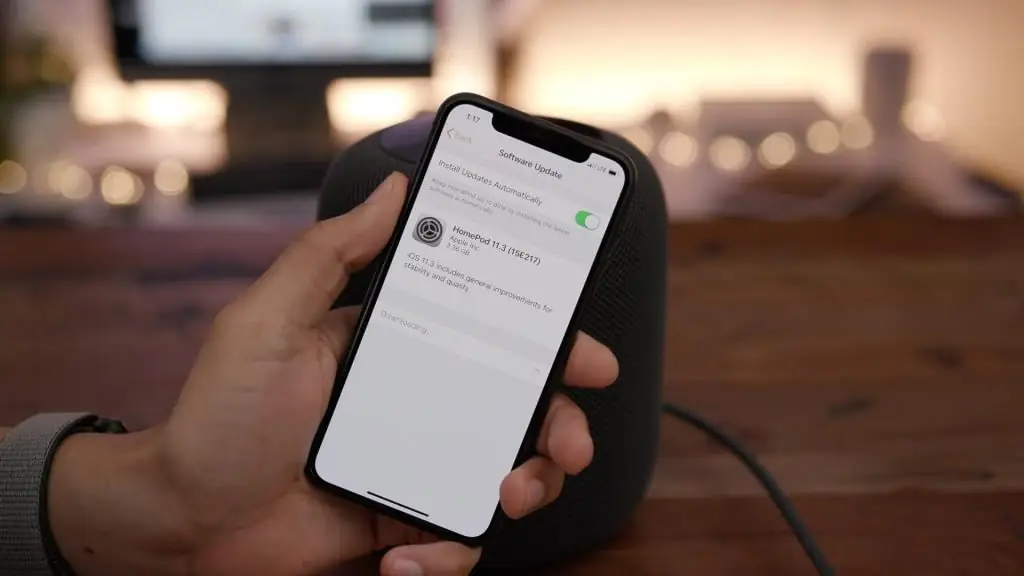
In addition, iPhone firmware (or flashing) is often called the process of updating or restoring the operating system. There may be several reasons for this operation, so each of them should be considered separately.
Why reflash an iPhone?
Most iPhone owners do not need to carry out any manipulations with the operating systems of their devices. However, the need for this may appear in the following situations:
- Hangups or spontaneous reboots of the device. This is most likely due to an iOS issue.
- Viruses. Malicious software can cause serious damage to your smartphone. Including lead to problems with the operating system.
- Smartphone stopped starting. If this was not preceded by any mechanical damage, then most likely the iPhone firmware is out of order.
- The desire to update iOS to a newer edition. Usually this operation is performed automatically, but sometimes you have to do it manually.
In addition, the need to flash the device may arise if you want to access functions that are not available in the basic versionoperating system.
Signs of firmware problems
It may happen that the problems with your smartphone are caused by reasons that are not related to the operating system. Therefore, before proceeding with any action, it is important to make sure that the firmware is damaged or completely out of order. Here are the main signs of this:
- Error messages started appearing frequently. However, they are not associated with any specific applications and occur randomly.
- The smartphone began to slow down and fail. Sometimes this is accompanied by crashes from applications, spontaneous launch of various programs and similar problems.
- iPhone does not turn on, the device does not react at all to pressing the Power button.
- Phone starts but freezes at Apple logo.
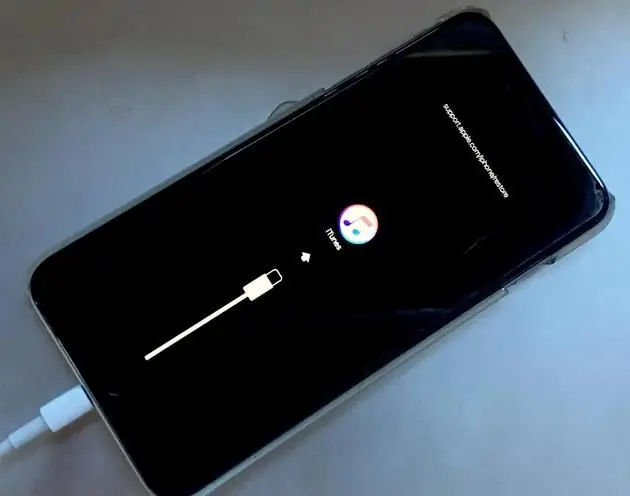
- The device turns on but shows a picture with a USB cable and an iTunes icon on the screen.
- The smartphone turns on, starts up, but immediately goes into reboot.
In addition, it is important to inspect the device for mechanical damage. Pay special attention to the battery.
Preparation
So, you have finally decided to reinstall the operating system on your smartphone. For this operation, you need to thoroughly prepare. Before installing the firmware on your iPhone, do the following:
- Back up all important information stored on your device. Save photos, videos, documents, contacts, andas well as other valuable files. During the flashing process, all this will be deleted. Of course, this is only relevant if your phone is in working condition.
- Make sure your smartphone battery is fully charged. If the phone turns off during the flashing, you will at least have to start over.
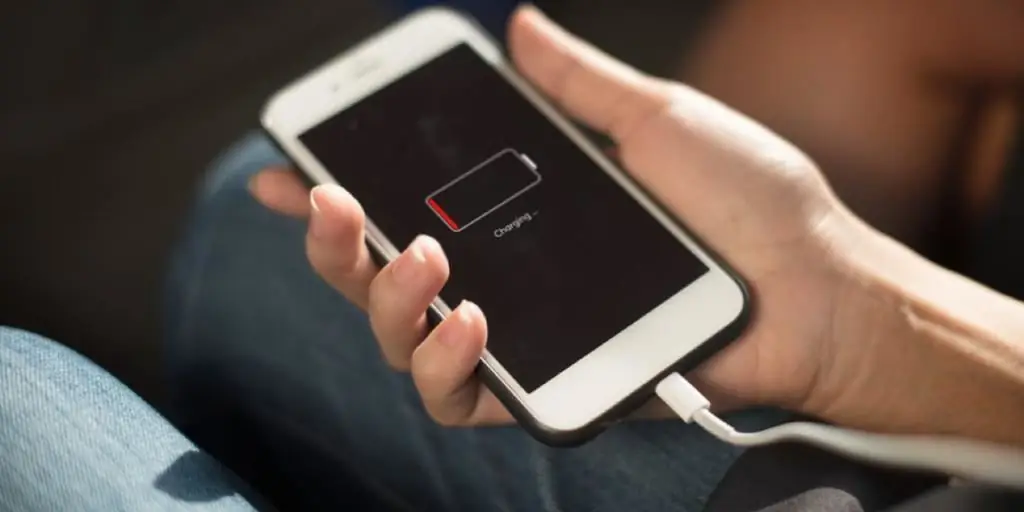
- Inspect the USB cable for mechanical damage. The same applies to USB ports on the computer and the iPhone itself.
- Check the stability of your internet connection. Problems with it may also cause certain problems.
It would also be nice to take into account such a factor as a sudden power outage. But these are already circumstances beyond the control of most users, so they will have to be neglected (well, or use an uninterruptible power supply).
Firmware search
The next step in preparing to reinstall the operating system is to find the appropriate software. Simply put, you will need to find and download the exact firmware that is suitable for your smartphone. Here's what to consider:
- Your iPhone version. This means that the firmware from "iPhone 5S" will not work, for example, for "iPhone 4".
- Device model. This is a set of characters that can be found on the back cover, below the Apple logo (example - Model A1234). At the same time, the firmware of "iPhone 4 Model A1334" in most cases will not be installed on the same phone, but with Model A4444.
- CDMA or GSM version of the device. Again, the "iPhone 6 GSM" firmware will not work for the same "iPhone 6 CDMA".
- After you have determined all the above characteristics of your device, you can start downloading the software. To do this, you will need to find a site where various firmware versions for iPhones will be presented, and choose the one that is suitable for your device.
Please note that the iPhone version is usually indicated in the file name itself, and all other data will need to be looked for in the software description. For example, the "iPhone 5" firmware will be called something like "iphone5_1_2_4.ipsw", and you will have to search separately for which smartphone model it is intended for.
Flashing options
Oddly enough, there are several options for flashing the iPhone. More specifically:
- Recovery Mode. Needed to restore the operating system. It is used in the event that the phone has ceased to function normally.
- DFU Mode. It differs from Recovery Mode in that it bypasses the protective mechanisms of the operating system. Most often needed if the normal recovery mode does not work.
- RedSnow. Named after the iPhone firmware program of the same name. Allows you to do the so-called jailbreak. Simply put, access device features that are intentionally disabled by developers (for example, the file system).
As you can see, each of the methods has its own characteristics and is designed for different purposes. Here it's onlyit's up to you to decide which one is right for your situation.
Recovery Mode
Regardless of what firmware you are going to install on the iPhone, in most cases Recovery Mode is suitable for this. This operation is performed as follows:
- Turn off your smartphone and wait until the display turns off.
- Connect your device to your computer by holding down the Home key. The PC will recognize the phone and notify you that Recovery Mode is running.

- Start iTunes. A window will pop up asking you to restore the phone's operating system. Click OK. If the program did not react to the device in any way, you need to click on the smartphone icon and manually select the "Restore iPhone" item by holding down the Shift key.
- The file manager will open, in which you will need to specify the path to the firmware downloaded earlier. Do this and click OK.
After that, iTunes will reinstall the firmware automatically. Wait until the end of the operation and turn off the device by long pressing the Power button. Then turn your smartphone back on.
DFU Mode
If for some reason it was not possible to flash your smartphone in Recovery Mode, then you can try to do it in DFU Mode. To do this, you first need to enable the mode of the same name, and this is done like this:
Connect your phone to your computer and turn it off. Wait until the screen is completely blank
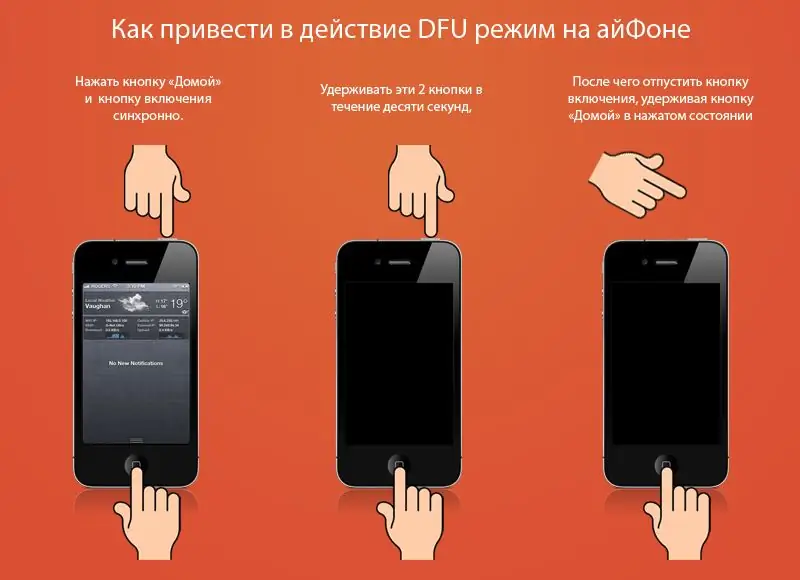
- Press the combination of Power buttonsand home. Hold them like this for at least 10 seconds.
- Now release the Power button, but keep the Home button pressed. Do not release it until the computer recognizes your smartphone in DFU mode.
After this happens, you will need to proceed with the installation of the firmware. This is done in exactly the same way as in the case of using Recovery Mode.
RedSnow
This method is recommended only for advanced users who want to get full access to the file system of their iPhone. Please note that this operation will void your warranty. If this doesn't scare you, do the following:
- Create a folder on your computer called PwnageTool. Put the downloaded firmware into it, as well as the latest version of the RedSnow program.
- Connect your smartphone to your PC and launch the iTunes utility. Click on the phone icon (on the left) and make a backup of the current firmware.
- Start RedSnow and click Extras. Then click Custom IPSW.
- Next, you need to specify the path to the firmware file downloaded earlier. Do it.
- Wait until the firmware modification process is completed, then click OK.
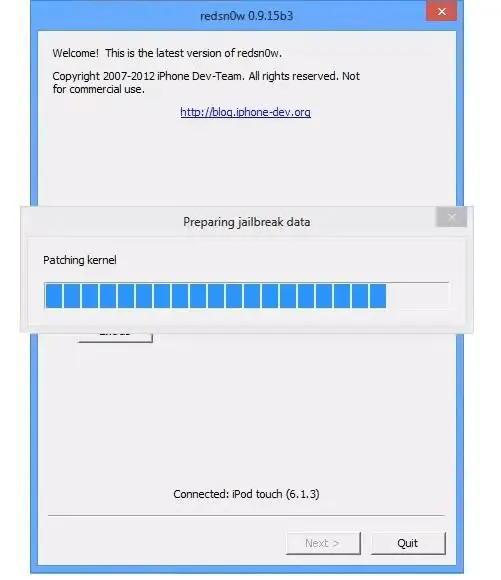
- Press Pwned DFU. Disconnect your smartphone from PC and then reconnect it.
- Now turn off your phone and press Next. Hold down the Home key for about 3 seconds.
- Press the Home + Power combination for 10 seconds. Let go of Power, but keep on Homehold for 10 more seconds.
- Your smartphone screen will turn off. Do not be afraid of this and in no case disconnect the device from the PC. You need to wait until the message Done!
After that, the program will create a modified version of the firmware. You need to install it on your smartphone using Recovery Mode.
What to do next?
After the iPhone flashing process is completed, you will need to check the functionality of the new software. To do this, "drive" the smartphone at least during the day. Check if there are any freezes, crashes, glitches, if all regular applications start normally.
After making sure that everything is in order with the phone, you can download files saved just before the flashing process to it. Of course, this is only relevant if you have backed up important information.
Possible problems
Sometimes it happens that the firmware is not installed on the device. Here are the most common causes leading to this problem:
- You downloaded the wrong firmware.
- No stable internet connection.
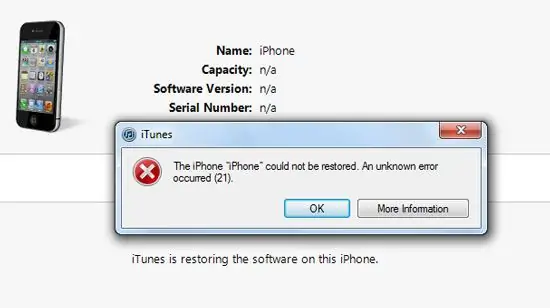
- Your antivirus is blocking iTunes.
- USB cable damaged. In addition, it is advisable to use the original cable.
Also, problems may occur due to the fact that you are not using the latest version of iTunes. It is recommended to always update it before flashing your smartphone.






